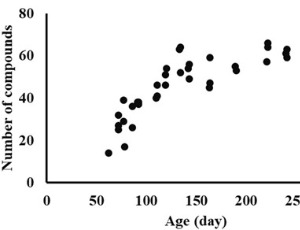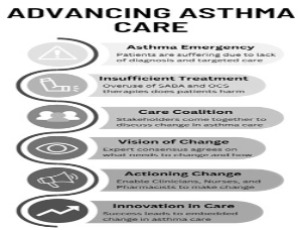Loading
Journal of Allergy and Infectious Diseases
ISSN: 2692-6334


H James Wedner
Professor
Washington University, USA
Featured Article
Chemical characterization of red imported fire ants with colony development

Featured Article
Mitochondrial disease patients and rotavirus infection complications

Featured Article
Building and implementing best practices for referral and management of severe asthma in Canadian healthcare

About this Journal
Journal of Allergy & Infectious Diseases is an international peer reviewed open access journal that publishes articles related to allergy & infectious diseases. It presents a spectrum of exciting information on various approaches adopted and their possible outcomes in allergy and inflammation research including new strategies in diagnosis, therapy and prevention of allergic and infectious diseases. The journal publishes high quality papers, which cover the entire major field related to allergy and infectious diseases.
Articles
A real life asthma biologic treatment comparison
Currently, it is estimated that only a small percentage of asthmatic patients do not achieve adequate control of the disease despite maintaining high doses of inhaled corticosteroids and assuming that they have a correct adherence and inhalation technique. In fact, severe asthma currently accounts for 5-10% of all asthma cases and is often driven by type 2 inflammatory mediators.
The effect of an aerosol of treignac mineral water concentrated by inverse osmosis in vitro on normal bronchial cells and in vivo on normal rabbit lungs
Hydrotherapy is a common technique used in thermal centers, primarily for the external treatment of skin pathologies. Various centers specializing in the management of infectious and inflammatory respiratory pathologies use hydrotherapy techniques internally, as well as through nasally, and bronchially
Innate lymphoid cell development
Innate lymphoid cells (ILCs) are a heterogeneous family of lymphocytes that lack conventional antigen receptors and play roles in tissue homeostasis and immune responses. Based on their transcriptional and functional properties, ILCs are classified into three main groups: group 1 ILCs (ILC1s and NK cells), group 2 ILCs (ILC2s), and group 3 ILCs (ILC3s). The developmental origins of ILCs remain an area of active investigation.
Impact of SARS-CoV-2 vaccinations on pandemic dynamics: Trends in cases, deaths, and fatality risks
Despite the decrease in COVID-19 testing and reporting new infections, the numbers of new cases and deaths per capita registered in some European countries and USA in September 2024 were higher than endemic limits and exceeded seasonal flu mortality. These facts make the development of new vaccines or the further use of existing ones very urgent.
Exploring the relationship between sex and long COVID
In December 2019, an outbreak of pneumonia, of unknown cause and often-fatal evolution, emerged among people linked to a seafood and live animal market in the city of Wuhan, China. Days later, health authorities in that country reported that the epidemic outbreak in that location was caused by a coronavirus, later named SARS CoV-2 (Severe Acute Respiratory Syndrome Coronavirus 2).
Our clinical experience in Van Province of Turkey; The relationship between Fasciola hepatica and eosinophil count
Fasciola hepatica is a liver trematode with worldwide animal distribution, most commonly seen in sheep- and cattle-raising areas. The flukes are leak-like, flat worms, measuring 2–4 cm. The number of reports of Fasciola hepatica has increased significantly recently, and several geographical areas have been described as endemic for the disease in humans, with prevalence and incidence ranging from low to very high.
Knowledge, perceptions, and practices related to soil transmitted helminth infections among family doctors in the municipality of San Miguel Del Padrón, Havana. Results of an intervention to improve expertise
Almost all programs for the control of soil-transmitted helminth infections implemented across Asia, Africa, and Latin America have focused on at-risk population through mass deworming, health education, and, when possible, environmental sanitation, underestimating the importance of the physician's role in these populations. The physician who provides services in the communities is an opinion leader, and if equipped with the necessary cognitive tools, could be crucial in any attempt to control many entities, including soil-transmitted helminth infections.
Chemical characterization of red imported fire ants with colony development
The red imported fire ant, Solenopsis invicta Buren, poses a significant threat to public health due to its venomous stings. While the chemistry of fire ants has been well investigated, most studies have focused on ants from mature colonies. The dynamic changes in chemical compositions during colony development have been less explored. In this study, we established S. invicta colonies using newly collected queens from the field and then tracked the chemistry of workers as the colonies developed. Our findings reveal that the chemistry of fire ant workers undergoes significant changes with the development of the colonies. However, the change in chemical diversity was not necessarily in the same direction for all individual glands.
Mitochondrial disease patients and rotavirus infection complications
Rotavirus (RV) is an agent of gastroenteritis and, to a lesser extent, neurological manifestations including seizures and epilepsy. Before the development of effective vaccines, rotavirus was among the leading global drivers of life-threatening diarrhea in neonates and children less than five years of age.
Building and implementing best practices for referral and management of severe asthma in Canadian healthcare
Severe asthma (SA) is asthma that remains uncontrolled despite patient adherence to mainteneance therapies and management of contributing factors, or asthma which worsens when high-dose treatments are reduced. It is estimated that 5-10% of asthma patients in Canada have SA. The condition is a significant burden on patients’ quality of life, and is associated with increased number and severity of exacerbations, hospitalizations, and mortality
Possible therapeutic targets for SARS-CoV-2 infection and COVID-19
SARS-CoV-2 infection causes COVID-19, which has emerged as a health emergency worldwide. SARS-CoV-2 infects cells by binding to ACE2 receptors and enters into the cytoplasm following its escape from endolysosomes. Once in the cytoplasm, the virus replicates and eventually causes various pathological conditions including acute respiratory distress syndrome (ARDS) that is caused by pro-inflammatory cytokine storms.
Monitoring clinical trials in infectious diseases
In early 2020, the contagious and deadly virus, SARS-CoV-2, was identified. The virus spread rapidly worldwide and was declared a pandemic by the World Health Organization (WHO) in March of 2020 [1]. While many who became infected remained asymptomatic, an alarming number of infected individuals developed severe symptoms, often requiring hospitalization and intensive care, or resulting in death.
Policy and law changes to address healthcare inequities for minority populations during COVID-19
While other countries have begun to see a flattening of the Severe Acute Respiratory Syndrome – Coronavirus-2 (SARS-CoV-2) curve, the United States continues to see a rise in cases, with approximately 7.4 million confirmed cases to date. Even more worrisome, various news articles have begun to shed light on the healthcare inequities that have become increasingly more transparent during this crisis.
Building and implementing best practices for referral and management of severe asthma in Canadian healthcare
Severe asthma (SA) is asthma that remains uncontrolled despite patient adherence to mainteneance therapies and management of contributing factors, or asthma which worsens when high-dose treatments are reduced. It is estimated that 5-10% of asthma patients in Canada have SA. The condition is a significant burden on patients’ quality of life, and is associated with increased number and severity of exacerbations, hospitalizations, and mortality
Possible therapeutic targets for SARS-CoV-2 infection and COVID-19
SARS-CoV-2 infection causes COVID-19, which has emerged as a health emergency worldwide. SARS-CoV-2 infects cells by binding to ACE2 receptors and enters into the cytoplasm following its escape from endolysosomes. Once in the cytoplasm, the virus replicates and eventually causes various pathological conditions including acute respiratory distress syndrome (ARDS) that is caused by pro-inflammatory cytokine storms.
Monitoring clinical trials in infectious diseases
In early 2020, the contagious and deadly virus, SARS-CoV-2, was identified. The virus spread rapidly worldwide and was declared a pandemic by the World Health Organization (WHO) in March of 2020 [1]. While many who became infected remained asymptomatic, an alarming number of infected individuals developed severe symptoms, often requiring hospitalization and intensive care, or resulting in death.
Policy and law changes to address healthcare inequities for minority populations during COVID-19
While other countries have begun to see a flattening of the Severe Acute Respiratory Syndrome – Coronavirus-2 (SARS-CoV-2) curve, the United States continues to see a rise in cases, with approximately 7.4 million confirmed cases to date. Even more worrisome, various news articles have begun to shed light on the healthcare inequities that have become increasingly more transparent during this crisis.
Mitochondrial disease patients and rotavirus infection complications
Rotavirus (RV) is an agent of gastroenteritis and, to a lesser extent, neurological manifestations including seizures and epilepsy. Before the development of effective vaccines, rotavirus was among the leading global drivers of life-threatening diarrhea in neonates and children less than five years of age.
Monitoring clinical trials in infectious diseases
In early 2020, the contagious and deadly virus, SARS-CoV-2, was identified. The virus spread rapidly worldwide and was declared a pandemic by the World Health Organization (WHO) in March of 2020 [1]. While many who became infected remained asymptomatic, an alarming number of infected individuals developed severe symptoms, often requiring hospitalization and intensive care, or resulting in death.
Policy and law changes to address healthcare inequities for minority populations during COVID-19
While other countries have begun to see a flattening of the Severe Acute Respiratory Syndrome – Coronavirus-2 (SARS-CoV-2) curve, the United States continues to see a rise in cases, with approximately 7.4 million confirmed cases to date. Even more worrisome, various news articles have begun to shed light on the healthcare inequities that have become increasingly more transparent during this crisis.
